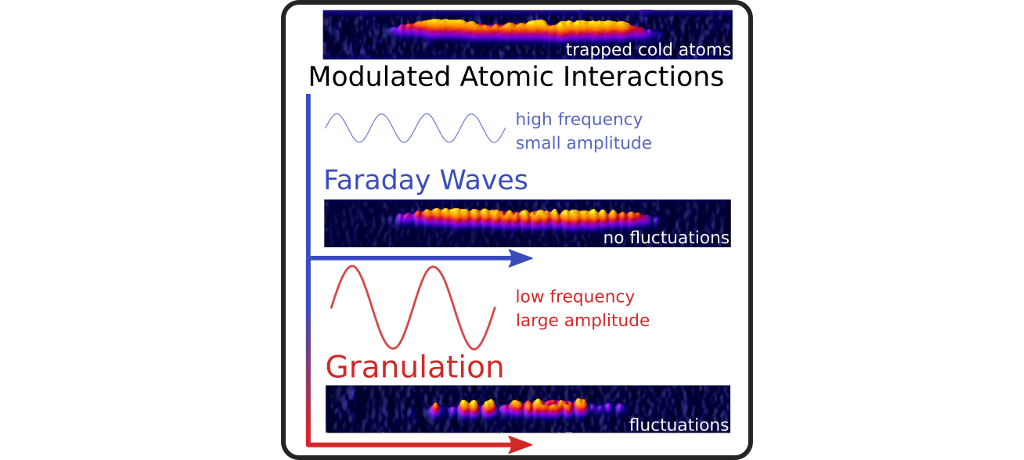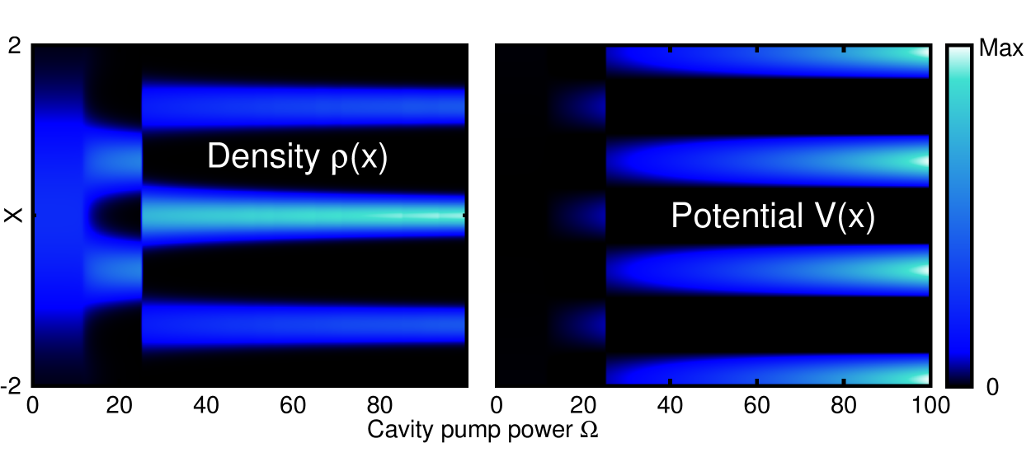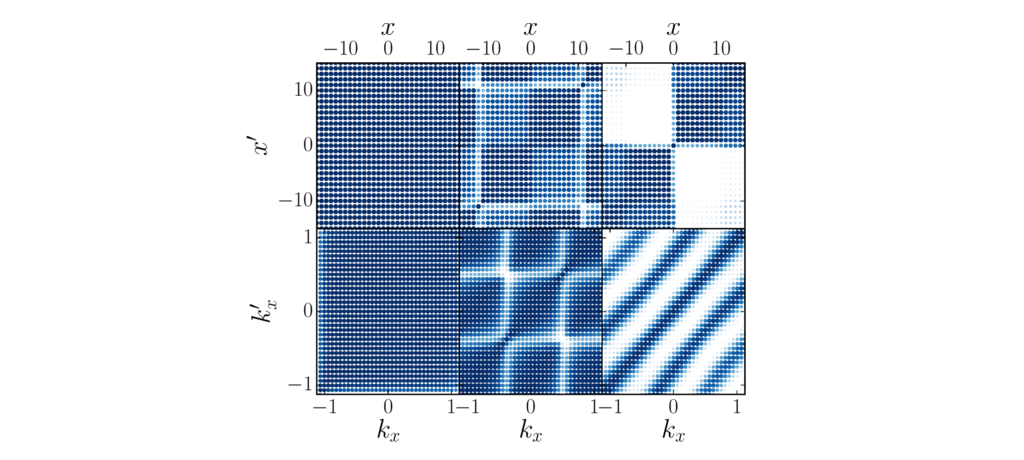PRL: Fragmented Superradiance of a Bose-Einstein Condensate in an Optical Cavity
Nowadays, scientists manage to routinely produce so-called Bose-Einstein condensates, a state of matter where ultracold atoms give up their individuality and form a society that is very sensitive to impending light. When this society is illuminated and the light it scatters is reflected back and forth between two mirrors, the atoms conglomerate in the intensity minima exhibited by the scattered light. We show how the interactions between atoms assisted by interactions of the atoms with light triggers the society of atoms to split into distinct groups as soon as the intensity of the scattered light trapped between the mirrors is sufficiently large. The formation of these groups is called "fragmentation" and the conglomeration due to the light is referred to as "superradiance". We demonstrate that both phenomena coexist and termed the new combined state of the light between the mirrors and the groups of atoms "fragmented superradiance". Fragmented superradiance can be inferred from correlations in the positions of the atomsÂą. In a Bose-Einstein condensate, there are no groups and all atoms are interrelated. For a fragmented Bose-Einstein condensate, there are groups of atoms with almost no interrelations. As a result the off-diagonal of the correlation function drops to zero.









